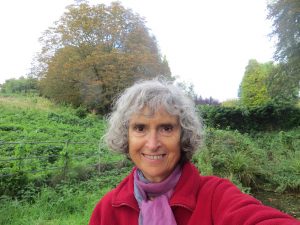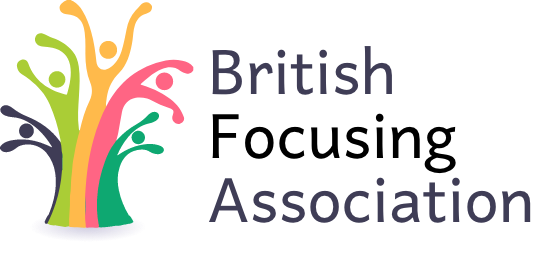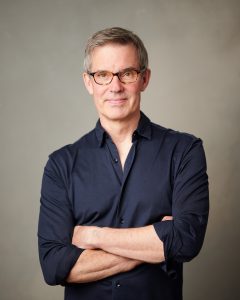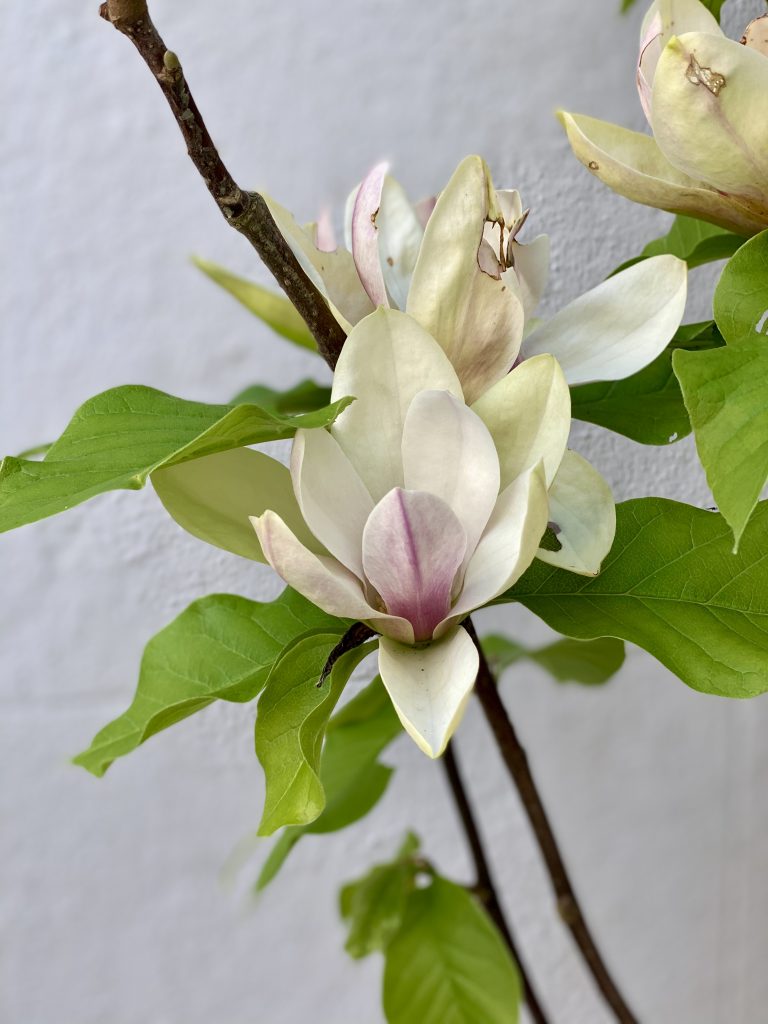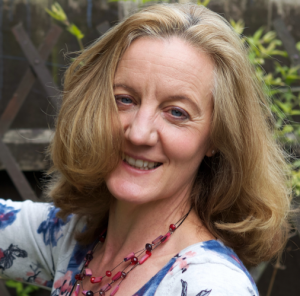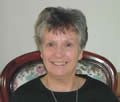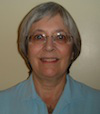Back to articles
8th Feb 2016
Focusing as a Doorway for Spiritual Growth
Page intro block
Lesley Wilson and Addie van der Kooy
Having been regular Focusers for over 10 years, we are still amazed at how
powerful a tool Focusing truly is. It has helped us with making important
decisions in our lives, it has been pivotal in managing physical pain and it has
become instrumental as a tool for healing, for example in facing deeply held
traumas from the past. But above all, Focusing is for us a very simple and
practical process for healthy spiritual growth which is firmly grounded in our
physical bodies.
Focusing has enabled us to touch a directly felt experience of who we truly are
and a directly felt connectedness and sense of belonging to some larger Life
Process or Presence. Whether this is given a name – like Higher Power, God, Tao
or the Great Universe – is not important. What matters is that we can actually
feel and experience it directly in our bodies. For us, this has become the core
of our journey and in this article we will explore the elements of Focusing that
have opened the door for us into this experience.
But first, we want to acknowledge the pioneering work of two psychologists of
religion, Dr Edwin McMahon and Dr Peter Campbell. Their work and teaching has
been inspirational to us, providing profound guidance for our journey with
Focusing. They recognised the significance of Focusing as a bodily grounded,
practical pathway for healthy, spiritual growth. They trained and worked with
Dr Eugene Gendlin and have, for many decades, been researching, developing,
teaching and writing about the spiritual dimension of Focusing. They use the
term “Bio-Spirituality” to describe this body-based spirituality which goes
beyond doctrine, religion, language and culture.
As they say in their book “Bio-Spirituality – Focusing As A Way To Grow“
“There are two critical issues in spiritual development..The first is
to discover a holistic approach for letting go of the mind’s omnipotent
control as a prelude to allowing some broader wisdom within the entire
human organism to speak. The second is to allow the unique next step that
is “me” to emerge as an integral, harmonious expression of some Larger
Process”.
Letting Be – “Letting go of the mind’s omnipotent control”
Two words lie at the spiritual heart of Focusing: “Letting Be”. They point to a
bodily felt unconditional acceptance of what is there. When we listen to
a place inside that hurts, for instance, the quality of our presence is not the
usual one of fixing or trying to make it feel better. Rather, we are willing to
let it be exactly as it is. Sometimes you can almost hear the place give a sigh
of relief when it feels this non-judgemental attention. It may soften or
intensify and as you continue to be with it in a way that says, “It’s ok for
you to be there, exactly the way you are now” , it often opens up and starts
to tell its story. As this unfolds, you can begin to understand the pain and
listen in a more compassionate way.
This total acceptance does not always bring immediate change to the place
inside, but it does change you, because you are holding this part of
yourself differently. Instead of feeling uptight about these horrible feelings
inside – “I shouldn’t feel like this!” – you relax and begin to feel
okay about yourself for feeling all this. There is a deepening of kindness
towards yourself, a healthy “self-love”. This is a major step to becoming a
whole person, welcoming home those parts of you that were split off or that you
had been holding out on, judging and suppressing. And there’s more – in doing
this you begin to have a sense of who you truly are – that you are much larger
than the wounded parts and can actually accept and embrace them. To have a real
body feel of this is extremely freeing.
Letting go of our mind-sets of how we, others and the world should be and
instead letting go into the reality of the present moment, is extremely
powerful. It is also very much misunderstood. Accepting what is present and
real now – inside and
outside – is not the same as acquiescence. True acceptance does not turn you
into a passive doormat for others. On the contrary, because of its non-reactive
nature, it gives you the space inside to trust and allow intelligent and
graceful resolution or action to arise that is fitting for the situation.
Presence and Identity
To be consistently present in this accepting way to what goes on inside creates
a safe, inner climate in which deep change can happen. In Bio-Spiritual
Focusing this bodily felt presence is called “caring feeling presence” and is
specifically evoked and nourished as a way to develop inner kinship with what
goes on inside. This is especially important when we are with painful feelings.
As Gendlin said, “Every ‘bad’ feeling is potential energy toward a more
right way of being, if you give it the space to move toward its rightness” .
A gentle, caring presence creates a nurturing climate – Gendlin’s space – so the
feelings can move and change in the way only they know is right for them.
It is not always easy to maintain this sense of caring presence, especially when
Focusing with intensely felt traumatised places, which may be overwhelming. But
in the very struggle to find your own unique way to be present and caring, you
are growing into your own sense of presence. For instance, you may need to find
a place somewhere in the body that feels safe and unaffected, e.g. the sensation
of your feet touching the ground can give a sense of safety and strength, a
sense of your own presence that says “I am here and all is well!”
This is emphasised by Kevin McEvenue, an Alexander practitioner and Focusing
trainer, in his teaching of “Wholebody Focusing”. He places great importance on
awareness of the body as a whole to provide a resource for being with
difficult
places. As Kevin says, “When a part of me feels loved it awakens to its own
healing” .
As you continue to Focus you begin to increasingly experience that this sense of
presence is who you truly are. A process is unfolding whereby you are gradually
dis-identifying yourself from parts and places inside you with which you were
previously identified. Your sense of identity is peeling away from entanglement
with
these parts. You begin to know yourself as that sense of presence: a simple
sense of ‘I Am-ness’ that cannot be affected by anything that happens internally
or externally. Nothing can be added and nothing can be taken away – I am simply
present and aware.
Trusting A Larger Process
To practice letting go of the “mind’s omnipotent control” of how Life,
the Universe and Everything should be, encourages a humility to emerge in
oneself. A deepening sense that “I don’t know and that’s ok” . A sense
of being content with not knowing. Having Focused for quite a few years it has
become clear to us that this humility brings a sensitivity and openness to a
larger intelligence that is present within the physical body. An intelligence
that can set in motion powerful healing processes. The body carries a wisdom, a
knowing how to move things forward inside so that stuck or hurt places can be
healed.
Focusing is all about allowing this “broader wisdom within the entire human
organism to speak” . It is about getting sufficiently out of the way, by
letting go of the mind’s control, so that this body wisdom can express itself in
its own unique way. So when we take our attention inside, it is clearly
important that we have no investment in a specific result, but rather an
openness and curious interest in where the body wisdom wants to take us.
But, our openness to the body’s wisdom must be genuine. The body can’t be
fooled. It will know when there’s still some kind of agenda, a wanting to fix
and change things in a certain way. Our conditioning to assert our judgements
as to what is good and bad and what should be and shouldn’t be is deeply
ingrained, so to let go to and trust this larger intelligence or process is a
huge step along our spiritual path.
As we begin to allow the body wisdom to speak in and through ourselves, there’s
an undeniable sense that this wisdom or intelligence is much larger than we are.
It’s moving in us but is also carrying us in it’s unfolding.
Paradoxically, the body gives us the experience of being both whole in ourselves
and yet, at the same time, part of something much larger. This may be
experienced in different ways. For instance, it may feel like my feet are
plugged into some large batteries hidden inside the ground and there’s a strong
sense of being connected with a flow of energy that is much larger than I am.
Often in that flow there is a sense of compassion for hurt places welling up
which I could not feel on my own. I have a sense of being surrounded and
supported by the whole earth, nature, the stars, the universe – a larger
Presence or Process. As Gendlin says:
“Your physically felt body is ..part of a gigantic system of here and
other places, now and other times, you and other people – in fact, the
whole universe. This sense of being bodily alive in a vast system is the
body as it is felt from inside” .
Feeling part of a Larger Process is a natural spiritual need that is deeply
etched in the psyche of human beings. It is often inadequately substituted by a
sense of belonging to certain cults, groups or even religions. To have lost the
experience of this “sense of being bodily alive in a vast system” has
been the primary cause of much human misery.
Felt Shifts – “Grace Unfolding”
Once you have a felt sense of a place inside and it begins to open up, it will
tell its story through a variety of symbols, such as images, words, insights or
physical movement. As the story unfolds, something may begin to shift. Either
the place itself or the way you are holding it may change.
Felt Shifts can sometimes happen in ways that could be described as “internal
alchemy”: the freeing up and transmutation of stagnant energy from stuck places
inside us. This freed energy strengthens our sense of Presence. There’s a
sense of being more present, more vibrantly alive. In his book “The Power Of
Now“, Eckhart Tolle calls this “internal alchemy or the transmutation of
the base metal of suffering into the gold of consciousness” .
These Felt Shifts are not of our own making. All we can do is to provide the
right climate for these places to feel heard and to step back and wait to see
what wants to happen. The body in all its wisdom inherently knows the direction
in which these places need to move in order to be resolved, so that, ultimately,
we can become whole.
When these shifts happen there is a sense of being gifted or ‘graced’ by the
movement of a larger process at work through you. Like being in a river that
powerfully flows towards it’s destination.
“Following the directions of Focusing is much like paddling a canoe
from some protected inlet out into the middle of a river. Once there…you
soon discover that the stream has a life and movement on its own. It does
not bend to your paddling any more than your canoe can change the course
of the river’s flow. All you can do is go with it in case it should catch
you and carry you along.” Peter Campbell and Ed McMahon.
Felt Shifts may be minute steps or they may be dramatic and instantly life
changing. They may change the way you hold a certain issue or a certain
situation in your life. They may open the door to creative solutions which your
mind couldn’t have thought of in its wildest dreams. Or they may unlock painful
places. Whatever it brings, a Felt Shift always feels good inside. First,
because we are at last beginning to know and accept ourselves; and second,
because we are reconnecting with the movement of some Larger Process which
deeply satisfies our spiritual need.
So Focusing facilitates this experience of the movement of the Larger Process
through one’s body and mind. To experience the immovability of one’s own unique
spirit, whilst also experiencing oneself being changed by the movement of a much
Larger Process inside may seem paradoxical. But the world inside one’s body is
a different world, with paradox and contrasts happily living together.
Living In The Now
As Peter Campbell and Ed McMahon have said, there is a critical issue in our
spiritual growth as human beings: the mind’s “omnipotent control” . The
thinking
mind generates an incessant stream of thoughts. When we observe this seemingly
unstoppable stream, it becomes obvious how much these thoughts take us out of
the present moment, because most are related to either the past or the future.
The only access point to our own unique spirit and connection with a larger
Process is the Here (our body) and Now (the present moment).
When Focusing becomes a way of living, you have a simple discipline that
provides an excellent way of disengaging from the control of the thought stream
and coming back home to the present moment. When you notice that you have
jumped on a train of thought that has left the Here and Now, you can simply ask:
“How does it feel in my body to think these thoughts?” This takes your
attention inside your body and back to the present moment. This simple
discipline, which can be done anytime, anywhere, offers us a way of living that
keeps us connected to the dimension where we can be gifted by the intelligent
energy of the larger Process.
Peacemaking From The Inside
As we begin to live this way, deep changes begin to happen in the way we relate
to ourselves and others. Whenever something happens that triggers strong
violent
emotion, we are less likely to get swept away in the usual reactive cycle of
violence-begetting-violence. Violent thoughts may be stirred up but by noticing
them in a Focusing way you can unhook yourself from the violent thought stream
and give yourself a choice in how to respond. This may not be easy in the heat
of the moment and will take some practice, but even a few seconds of such bodily
awareness can already be powerful. Even in such a short time there can be an
experience of “grace”, of something shifting in the way you are holding the
situation.
When these feelings are ‘graced’ inside, it may also become clear whether there
is some action to be taken with regard to the situation. You have broken the
usual chain of reactive violence and any action you take now will come from a
more peaceful way of being inside.
As Campbell and McMahon put it,
“Through developing a relationship with the inner realm of “Grace” or
“Gift” we give ourselves the chance to live in inner harmony instead of
inner conflict. Then we are much more likely to be a catalyst for peace
rather than conflict in the outer world”
Back to articles
